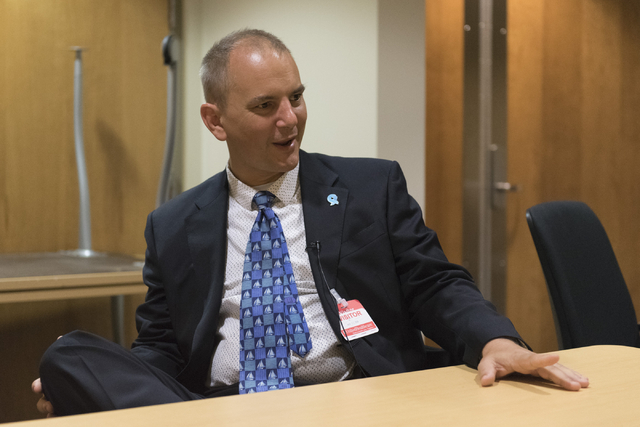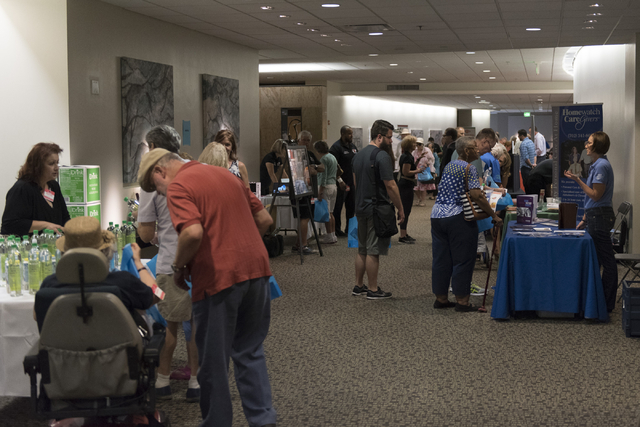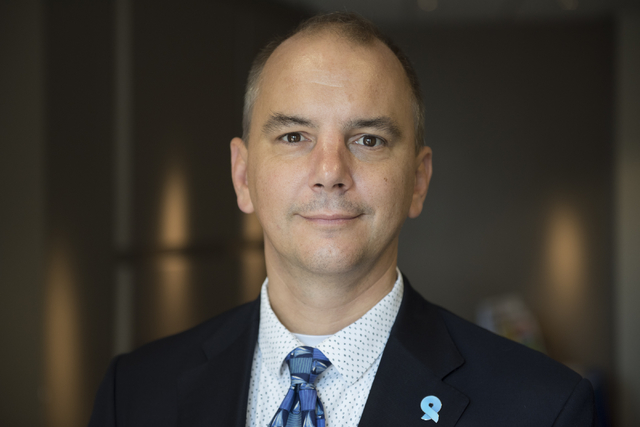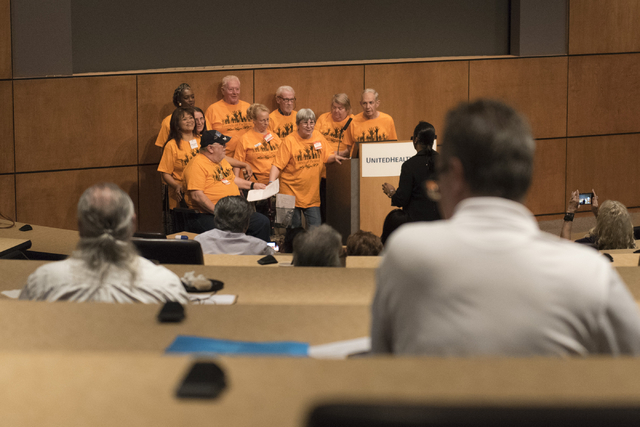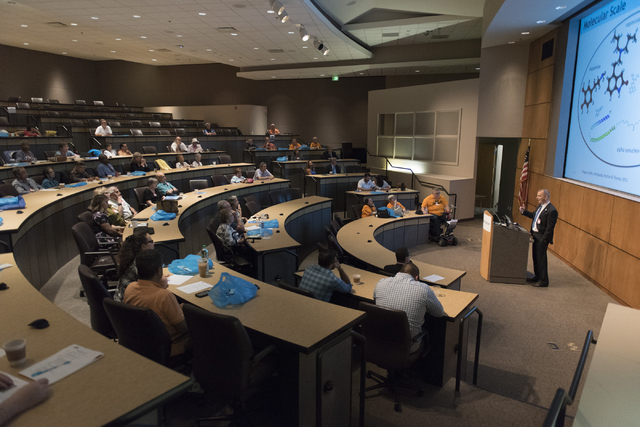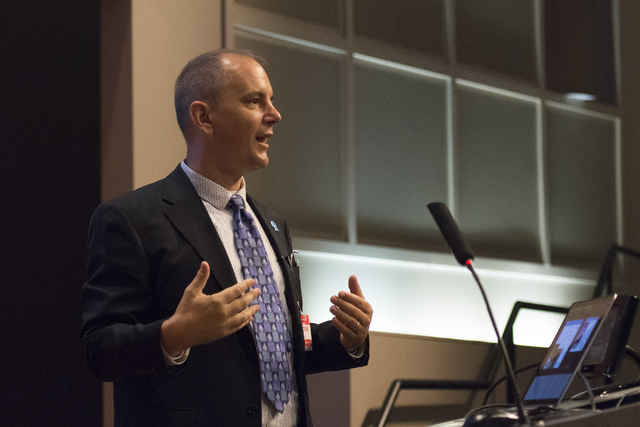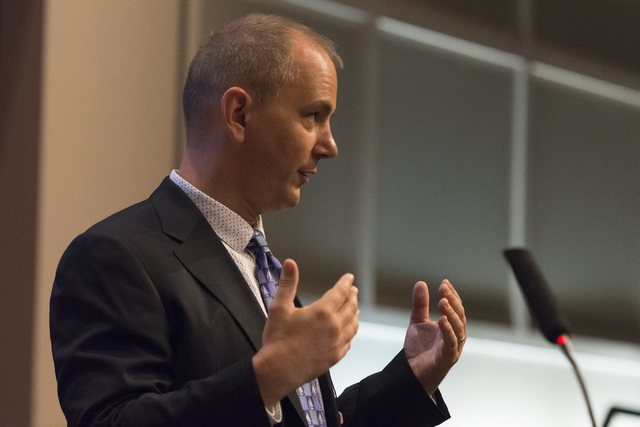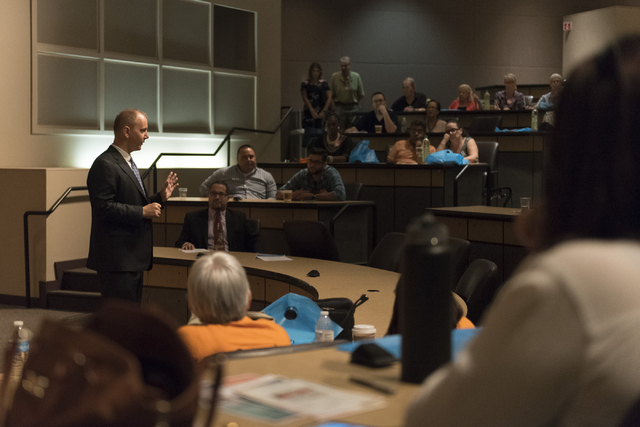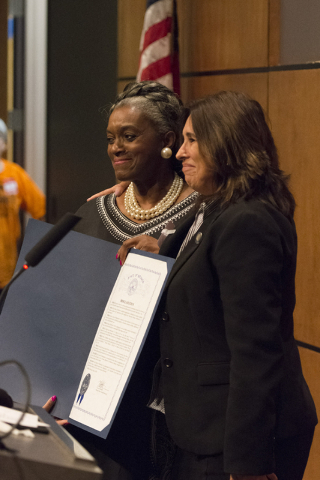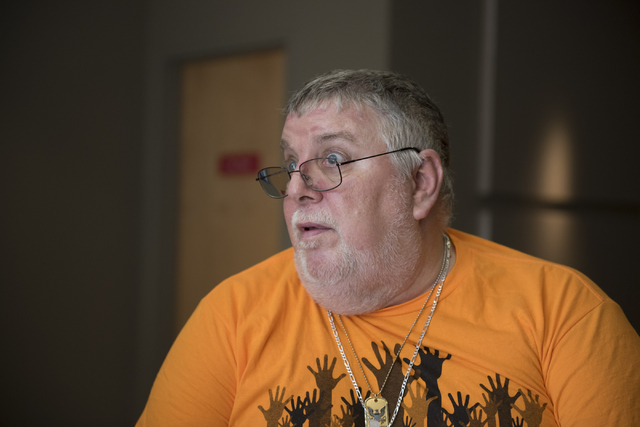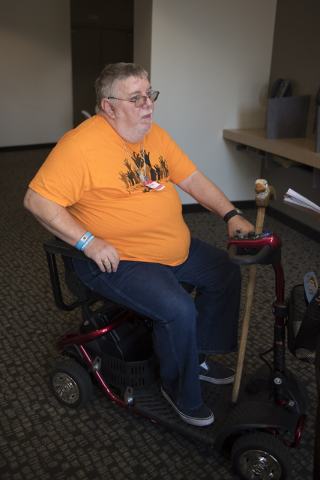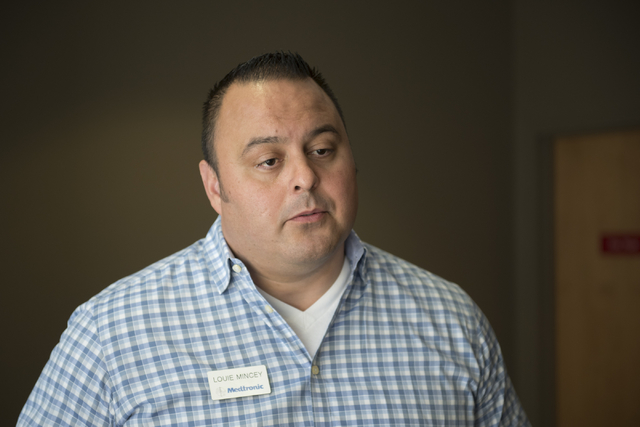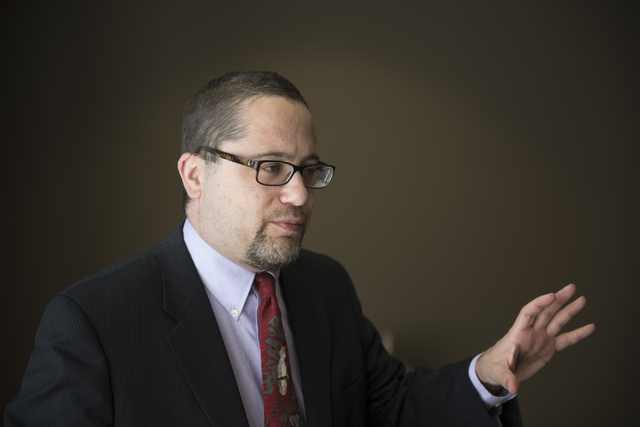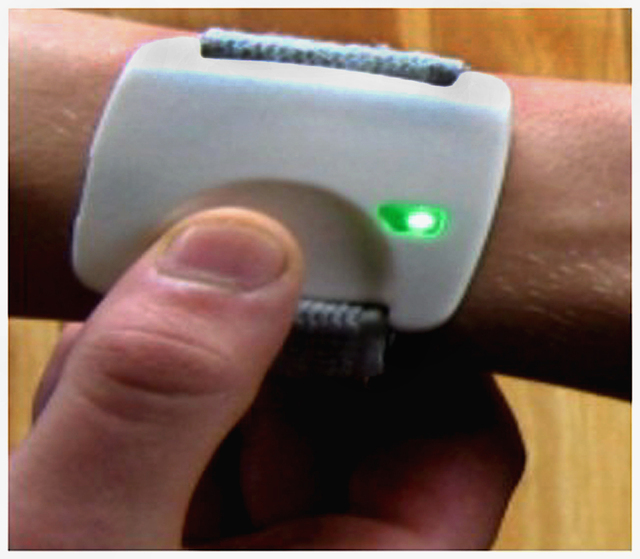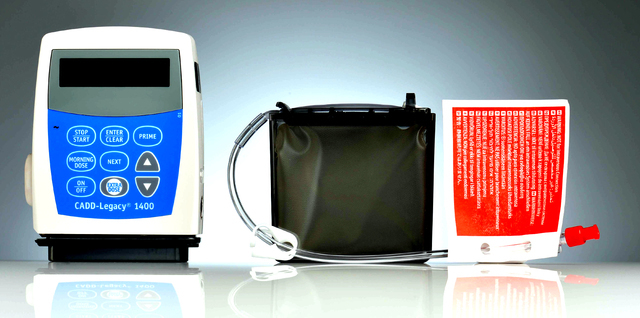Parkinson’s experts meeting in Las Vegas discuss new technology treatments
Although science has yet to find a cure for Parkinson’s disease, new technologies have proved valuable in monitoring and administering treatments for controlling its symptoms.
About a half-million people suffer from Parkinson’s disease, a progressive degenerative condition characterized by slowness of movement, tremors and instability, the National Parkinson Foundation estimates.
AS ALWAYS, EXERCISE
The foundation’s recent “Parkinson’s Outcomes Project” study found that people who exercise a minimum of 2½ hours a week experience a slower decline in quality of life. Wearables such as the Fitbit that monitors a person’s steps, distance and calories burned and the Apple Watch that tracks sitting or standing, sets weekly exercise goals, and measures walking and running are quickly becoming tools for Parkinson’s patients.
“It’s very valuable when you, as an individual with Parkinson’s disease, can take charge of your own health,” said Dr. Peter Schmidt, the foundation’s senior vice president and chief mission officer. “Wearable technology allows them to do this.”
Schmidt was recently in Southern Nevada as a guest speaker at the Friends of Parkinson’s second annual Parkinson’s Medical Symposium. He spoke on how technology plays an important part in helping to treat the disease.
AND SLEEP
“Poor sleep can contribute to Parkinson’s and Alzheimer’s,” Schmidt said. “Sleep monitoring is very important. Now you have a watch to monitor sleep that creates a record you can give your neurologist.”
With this information, a neurologist can determine if a patient is getting enough hours of sleep, or being restless throughout the night, Schmidt said. Additionally, he said Parkinson’s medications may wear off during the night and a smartwatch can be programmed to alert a patient to take additional doses.
Also, because slowness of movement is a common trait, neurologists frequently administer a finger-tapping test to see how fast patients react. Schmidt said an app can be downloaded to a smartphone and a patient taps the phone screen and records movements.
This information helps a neurologist in monitoring medication to see if adjustments are needed. Medications are used to produce dopamine. The disease occurs when nerve cells become impaired or die and don’t produce dopamine. This shortage causes movement problems for patients.
ALSO, NEW DEVICES
Abbvie, a specialty focused, research-based biopharmaceutical company, received approval for its Duopa medicine device from the Food and Drug Administration in January 2015, according to Jack Hirschfield, director of U.S. public affairs for the company. The system includes a cassette containing Duopa, two medicines, carbidopa and levodopa; a pump that moves medicine from the cassette and a tube that is surgically inserted through a small incision into the abdomen. This allows for the administration of levodopa for as long as 16 hours.
Levodopa changes into dopamine in the brain, which helps to control movement. Carbidopa is used to prevent the breakdown of levodopa in the bloodstream and to reduce the side effects of nausea and vomiting.
MONITORING AND RECORDING CHANGES
The National Parkinson Foundation in June announced its collaboration with Global Kinetics Corp. of Melbourne, Australia, on a wrist-worn device that can record a patient’s motion data over six days. Physicians are able to download a patient’s symptoms information immediately, which will be used to identify changes that may affect treatment protocols.
The system, called the Personal KinetiGraph Movement Recording System, is undergoing clinical study. Schmidt will be launching a randomized trial by the end of the year to provide devices to 300 patients at 25 Parkinson’s centers.
A company representative said the devices are provided to patients only by a physician’s order. Physicians not using the devices are urged to contact the company for more information.
“The PKG provides continuous, precise and accurate assessments of changes in mobility in patients with Parkinson’s disease, which can play an important role in helping make informed treatment decisions, allowing clinicians to provide optimum treatment and ultimately leads to better outcomes for people with Parkinson’s,” Malcolm Horne, Global Kinetics co-founder and chief scientific officer, said in a statement.
Michael Eshleman, 62, was diagnosed with Parkinson’s in 2015. He had been suffering from shaking legs for eight years. After taking various medications and experiencing adverse side effects he decided, with his doctor’s recommendation, to undergo deep brain stimulation surgery.
ELECTRIC PULSES
The surgery uses electrical pulses to block signals of faulty nerves that cause tremors, rigidity and slowness of movements. The procedure involves making two small holes in the top of the skull on the right and left sides. Electrodes are inserted into the brain at specific target points and electrical wires are connected, passed under the skull and neck skin and down to a battery-operated neurostimulator placed under the chest skin that operates much like a pacemaker.
Eshleman had the procedure in March, and in April the battery pack was turned on. His tremors stopped immediately and he is able to feed himself and walk short distances.
“This technology has changed my life a lot,” Eshleman said. “It’s amazing what they can do. This is probably the most advanced technology that there is.”
“All data gathering is important,” said Dr. Eric Farbman, a neurologist and associate professor at the University of Nevada, Reno School of Medicine. “Technology allows us to apply better treatments.”
“I would like to see more education provided on the technology side for Parkinson’s patients,” said Jamillah Ali-Rahman, executive director of Friends of Parkinson’s, a Southern Nevada nonprofit organization dedicated to providing Parkinson’s patients with quality service and care. “I’m fascinated that they have a pump (to administer levodopa) and someone can wear a watch to monitor their medications and exercise. This is ‘Star Wars’ technology — and it’s fascinating.”



